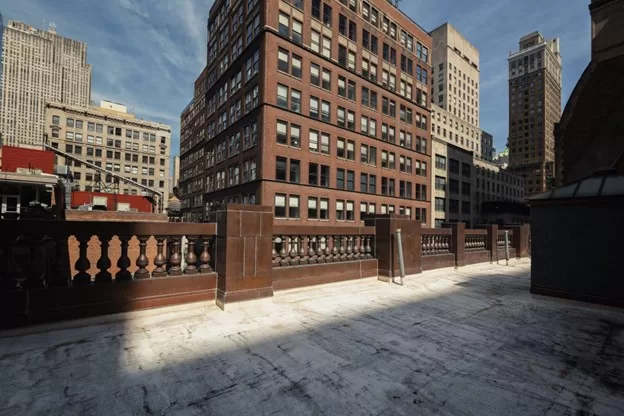Somewhere, a historic warehouse faces a crucial challenge: its unreinforced masonry walls don’t meet current seismic requirements, yet its owners want to convert it into modern office space. Meanwhile, across town, a new mixed-use development must incorporate the latest energy efficiency standards while ensuring accessibility for all users.
These scenarios happen on a daily basis and highlight how building codes shape every aspect of construction and restoration projects. This creates both challenges and opportunities for property owners and developers.
Key Takeaways
- Modern building codes go beyond basic safety to include energy efficiency, accessibility, and sustainability.
- Different codes apply to new construction versus existing buildings, with special provisions for restoration projects.
- Early engagement with building officials and thorough planning are crucial for successful compliance.
- Fire protection, structural design, and energy requirements vary based on building type and location.
- Future code updates should be considered during initial design to reduce long-term costs.
- A systematic approach to code compliance helps prevent costly corrections later.
Understanding Modern Building Codes
Building codes represent more than just regulatory requirements – they form the foundation of safe, sustainable construction practices. The International Building Code (IBC) serves as the primary model code in the United States, with local jurisdictions adding specific amendments based on regional conditions and requirements.
Unlike earlier codes that focused mainly on fire safety and structural integrity, modern building codes address a comprehensive range of concerns. These include energy efficiency, seismic resilience, accessibility standards, and occupant safety.
Take, for instance, architectural railing replacement – a seemingly straightforward update that actually requires careful attention to current safety standards while maintaining a building’s aesthetic integrity.
The distinction between codes for new construction versus existing buildings is particularly important. The International Existing Building Code (IEBC) provides specific provisions for restoration projects, recognizing the unique challenges of working with older structures while ensuring safety and compliance.
Critical Code Considerations
Building professionals must navigate several critical areas where codes significantly impact project decisions:
- Life Safety Requirements
- Fire-resistance ratings for structural elements
- Emergency lighting and exit signage
- Occupant load calculations
- Structural Standards
- Seismic design categories
- Wind load requirements
- Snow load provisions
- Accessibility Compliance
- ADA pathway dimensions
- Elevator requirements
- Restroom configurations
For instance, when converting an old factory into residential lofts, developers must address fire separation requirements between units, ensure adequate emergency exits, and provide accessible routes throughout the building – all while preserving the structure’s historic character.
Technical Code Applications
The application of building codes requires careful attention to performance requirements and prescriptive standards. Understanding these technical aspects begins with proper building classification and use group determination.
- Fire Protection Systems: Building requirements vary based on height, area, and occupancy type. This includes requirements for sprinkler systems, fire alarms, and smoke control measures. A high-rise office building, for example, requires sophisticated fire detection and suppression systems integrated with building automation controls.
- Structural Design Requirements: Geographic location and site conditions drive specific needs. Engineers must calculate loads according to ASCE 7 standards, incorporating both gravity and lateral force considerations. This becomes particularly complex in seismic zones or areas with high wind exposure.
- Energy Code Compliance: The International Energy Conservation Code (IECC) establishes minimum requirements for insulation values, window performance, and HVAC efficiency. New construction must often meet stringent energy performance targets through a combination of passive and active strategies.
Implementation Guide
Successfully navigating building codes requires a systematic approach:
- Start with a thorough code analysis during the initial project planning phase. Identify applicable codes and standards, including any local amendments or special requirements. Create a compliance matrix that tracks key requirements and their impact on design decisions.
- Engage with local building officials early in the process to clarify interpretations and discuss potential alternative compliance methods. Document these discussions and obtain preliminary approvals for critical design approaches.
- Develop detailed construction documents that clearly indicate code-required elements and specifications. Include specific references to applicable code sections and standards to facilitate plan review and inspection processes.
Long-term Perspective
Building codes continue to evolve, reflecting new technologies, changing environmental concerns, and improved understanding of building performance. Property owners and developers should consider:
Future code updates may require additional modifications or upgrades to maintain compliance. Planning for potential changes during initial design can reduce long-term costs and disruption.
Energy codes, in particular, are becoming increasingly stringent, with some jurisdictions already adopting net-zero energy requirements for new construction. Understanding these trends helps inform current investment decisions.
Conclusion
Navigating building codes may seem complicated, but it’s an investment that pays dividends in safety, efficiency, and long-term value. Whether you’re restoring a historic landmark or breaking ground on a new development, thorough code compliance from the start prevents costly corrections and ensures a building that serves its occupants well into the future.
By working with knowledgeable professionals and taking a proactive approach to code compliance, property owners can create spaces that honor the past while embracing modern standards of safety and performance.

